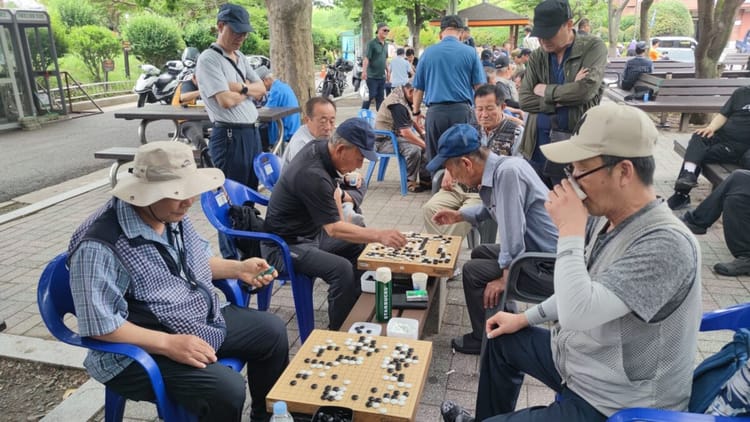Why Are Adults Obsessed With LEGOs?? It's Not Just Nostalgia.

The other evening, what began as a charming date night with Becky and a bottle of Cabernet Sauvignon took an unexpected turn. Our mission? Conquer the LEGO Tree House. What we anticipated as a few cozy hours of clicking bricks quickly unfolded into a week-long adventure. Each evening, we found ourselves drawn back to the table, not just to follow the intricate instructions, but to a shared space of quiet focus and collaboration.
It struck me, amidst the scattered tiny pieces and the satisfying snap of connection, that LEGOs aren't just relics of childhood. They hold a unique power, even for adults, offering a surprising blend of fun, therapy, and connection.
The idea of adults playing with LEGOs might be associated with images of serious collectors or dedicated hobbyists. And while that community certainly exists, my experience was rooted in something way simpler: pure, unadulterated fun.
There was a childlike joy in opening that box, sorting the colorful bricks, and watching a tangible creation take shape under my fingertips. It was a playful escape from the demands of daily life, a chance to engage with a different kind of problem-solving, one that rewards creativity and patience.
The Quiet Therapy of Creation
Let's delve deeper into that fascinating intersection of hands-on work and its therapeutic effects. I found immense satisfaction in fiddling with those small pieces, the calming repetition of putting them together one by one, and the sense of accomplishment that arose from witnessing our tree house grow. This resonates deeply with a fundamental human need to create and to see the direct results of our efforts.
In our increasingly digital world, where so much of our work exists in the abstract realm of code, emails, and virtual meetings, the act of creation offers a powerful counterpoint. After a long day spent debugging thousands of lines of code, or where my hard work seems to go unnoticed or unvalued, the immediate feedback of snapping two LEGO bricks together can be incredibly grounding for me. It's a small, concrete achievement in a world often characterized by ambiguity.

This therapeutic aspect isn't unique to LEGOs, of course. Consider the satisfaction of knitting a scarf, the focused energy of woodworking, the mindful process of arranging flowers, or even the simple act of tending a garden and watching a seed sprout. These activities share a common thread: they engage our tactile senses, demand our focused attention, and provide a visual representation of our progress.
There's a certain mindfulness that comes with this kind of work. When you're concentrating on fitting a small piece into its designated spot, your mind naturally quiets down. The worries and anxieties of the day fade into the background as you become absorbed in the task at hand. This focused attention, akin to a meditative state, can help to reduce stress and promote a sense of calm. Also, unlike tasks that might feel endless or whose impact is difficult to measure, a physical creation offers clear evidence of your effort. You can see it, touch it, and even share it. This sense of measurable progress can be particularly rewarding after days where you feel like you've exerted a great deal of energy without seeing concrete results. It's a visual reminder that you have created something.
This connection between our hands, our minds, and the physical world is deeply ingrained. From our earliest experiences of stacking blocks to more complex crafts, working with our hands allows us to engage with the world in a direct and meaningful way. It provides a sense of control, a channel for creativity, and a powerful antidote to the often-abstract nature of modern life.
Brick by Brick, Building a Stronger Bond
However, the most significant revelation of our LEGO journey was the unexpected strengthening of our connection. We just naturally broke into work streams for incoming tasks: one reading instructions and one filtering and finding pieces. We discussed the next steps, offered suggestions, and celebrated small victories together. The intricate design of the tree house, with its hidden compartments and whimsical details like a secret gem and a pair of "just-in-case" scissors under the pillow, sparked conversations and laughter.

This shared endeavor provided dedicated time, free from the usual distractions. We weren't just coexisting in the same space; we were actively working towards a common goal, visualizing its growth day by day. It wasn't about the final product as much as the process – the shared moments of problem-solving, the gentle teasing when one of us misplaced a crucial piece, and the mutual satisfaction of seeing our collective efforts come to fruition.
The Power of Shared Experiences
Our LEGO adventure served as a potent reminder: it truly doesn't matter what you do, as long as you're doing it together. Whether it's constructing a miniature world of plastic bricks, tackling a challenging puzzle, learning a new skill, or simply dedicating uninterrupted time to a shared hobby, the act of working collaboratively with your partner can be incredibly beneficial. It fosters communication, builds understanding, and creates shared memories that weave into the fabric of your relationship.
What are some unexpected activities that have brought you closer to your loved ones? Have you ever rediscovered a childhood pastime as an adult and found new meaning in it? What is it about hands-on creation that you find particularly therapeutic? Share your experiences and thoughts in the comments below – we'd love to hear your stories!




Comments ()